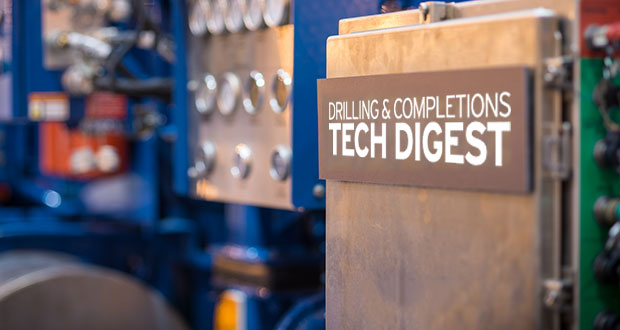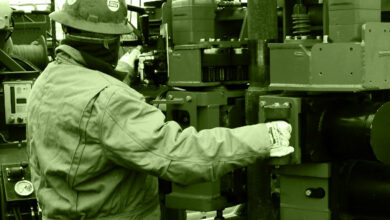Drilling & Completion Tech Digest


Curve and lateral sections of Middle East well drilled autonomously using Schlumberger’s Neuro solution
Schlumberger recently launched its Neuro autonomous solutions, which use advanced cloud-based software and connected intelligent systems to create a continuous feedback loop between surface and downhole. This increases the efficiency and consistency of E&P operations while reducing human intervention and footprint. The solutions are seen as a step to achieve fully autonomous operations.
The first Neuro solution being introduced delivers steering autonomy for directional drilling. The solution uses artificial intelligence with surface and downhole automation workflows to self-determine steering sequences and deliver the well trajectory on plan. As the well is drilled, a real-time continuous feedback loop between an intelligent downhole system and a surface advisory system automates downlinks, reducing control loop time. The instantaneous correlation between downhole and surface actions in accordance with the well plan significantly reduces risk, refines precision and increases efficiency —reducing associated drilling emissions.
Neuro autonomous solutions for directional drilling have been deployed across North America, South America, Middle East and East Asia. The solution has been deployed on more than 50 rigs across 10 countries and executed on 131 customer wells, drilling 612,000 ft.
In the Middle East, an operator recently used the solution to autonomously drill a well from 22° to 90° inclination with a curve section measuring 2,500 ft and a 5,400-ft lateral section. Both sections were performed using an autonomous-capable rotary steerable system that contributed to the balance between surface and downhole autonomy enabling the operator to reduce downlinks by 33%, compared with offset wells drilled in manual mode, while achieving a 13% increase in rate of penetration.
Separately, Schlumberger also launched its Digital Platform Partner Program, which will allow independent software vendors (ISV) to leverage the openness and extensibility of Schlumberger’s digital platform to build new applications and software and offer them to the market.
At launch, nine ISVs are offering software solutions to Schlumberger customers, and the platform has been designed with an open framework to quickly onboard new partners. The solutions are built and deployed through the DELFI digital E&P platform and integrate with industry-standard data platforms. This enables enhanced interoperability across workflows and organizations.
OPC Foundation, FieldComm join forces on interoperability of instrumentation devices
The OPC Foundation and the FieldComm Group have announced a collaboration to drive multi-vendor interoperability of instrumentation devices based on OPC UA and the extensions for the field level, named OPC UA FX (Field eXchange). This development will incorporate preliminary work by both organizations. This will ensure that the market will have only one single standard. The aim is to provide an interoperable interface between PLC/DCS and instrumentation devices, such as transmitters, instruments and actuators. The solution will support different industries, including oil and gas.
To begin this work, a new OPC UA Instrumentation Working Group is being hosted by the OPC Foundation, under the leadership of the Field Level Communications Initiative. Participation in the working group is open to members of the OPC Foundation, as well as corporate entity members of the FieldComm Group. Many well-known manufacturers in the process and factory automation industries are represented.
In order to achieve inter-vendor interoperability of instrumentation devices, the working group will add to the UAFX base specifications the definition of interfaces and behaviors which are typical for instrumentation devices, including:
- Commonly used interfaces and data types for the industries mentioned above including functional safety;
- Diagnostic information specific to instrumentation devices;
- Operation modes of instrumentation devices; and
- State machines and timing models for instrumentation-specific functionality, where appropriate.
The new instrumentation device profile specification will use PubSub and can be combined with different underlying communication protocols (e.g. UDP/IP) and physical layers (e.g. Ethernet-APL) to support all relevant use cases in discrete and process manufacturing, including safety instrumentation based on OPC UA Safety and deterministic data exchange based on Ethernet Time-Sensitive Networking, where appropriate.




